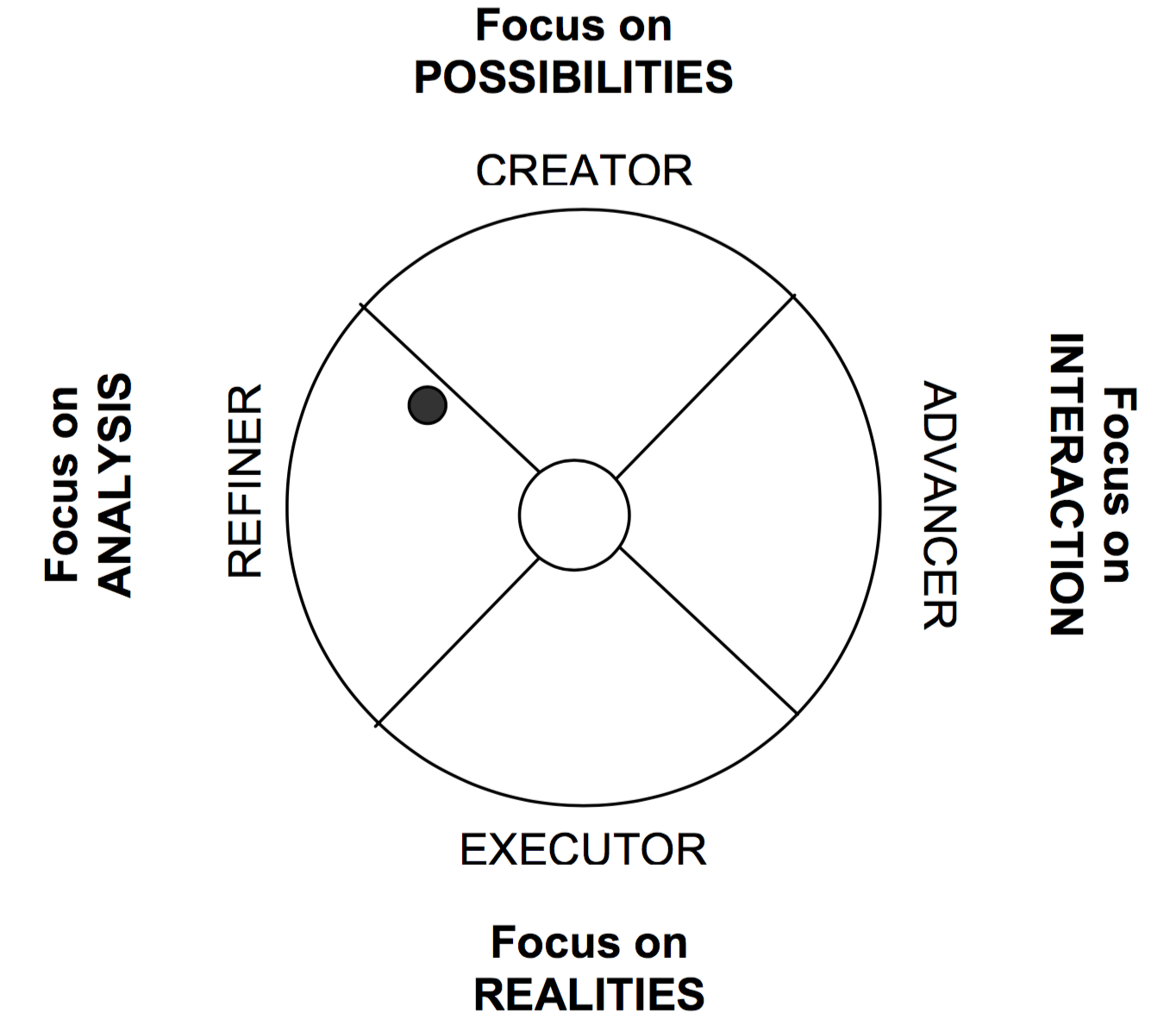by Teresa Jurgens-Kowal, PE, CPEM, PMP®, NPDP
Innovation is key to success in all businesses today. Global competition is driving a faster pace of technology development, and consumers require updated and integrated access to products and services. Yet, innovation often remains an elusive goal for many engineers.
Engineering managers are on the frontline to encourage creativity and innovation. While we must always place safety as a first priority, we can adopt testing, prototyping, and variation as tools to improve product and process performance. Building effective, balanced innovation teams is the first step to long-term, sustainable success.

Innovation Team Member Profiles
A team is generally composed of several engineers with different levels of experience and various skill sets. Such diversity in education and knowledge can lead to more creative problem-solving, but only when the diversity does not lead to conflict. Understanding the work styles of your team and how to mold the team for productivity is the responsibility of the innovative engineering manager.
Creators
Creators are team members who love the hunt for new ideas. They are eager to “bounce around ideas and concepts,” and they enjoy thinking in the abstract. They love brainstorming sessions and are very arisk-tolerant. If an experiment doesn't work out, then they are ready to move on to the next one. Generating a lot of options and alternatives is very energizing to a creator.
Executors
At the opposite end of the spectrum are executors. These team members like stability and predictability. Once the plan is written, an executor will follow the steps exactly. Executors prefer concrete thinking to the abstract and will often jump immediately to solution-generation. They are energized by systems and procedures, enjoying implementing projects with specific and detailed checklists, for example.
Refiners
While creators and executors sit at opposite ends of the opportunity spectrum, refiners and advancers view communication and relationships as the primary lens for teamwork. A refiner enjoys analysis and will mold and shape project data to draw objective conclusions. Refiners may prefer to work alone and assume that all solutions must be based on logic. Ideas that are impractical are not necessary to study from a refiner's perspective; but, if the existing data supports a solution to the problem, a refiner will design an accurate response.
Advancers
Further, while the refiner believes the data speaks for itself, advancers relish building relationships to sell and promote an idea. Emotional linkage to a product or process solution is engaging for an advancer to develop. They act us “cheerleaders” for projects and can get others excited about it. Advancers are energized by interactions with potential customers and senior management because they are excited to promote answers to solve problems.
Potential Team Conflicts
Engineering leaders need to manage personality conflicts yet can encourage diverse technical discussions to drive toward a better solution. Creators may find frustration with the slow, methodical work of an executor. An innovation team can thrive by letting creators have free reign at the beginning of a project but transferring standardized implementation to the executors later in the project life cycle.
Likewise, refiners may be frustrated with the exuberance of an advancer, who in turn believes in the emotional value of a solution. Advancers will find the pace of work of a refiner slow and may not understand their need for isolation. Each team members’ preferred work style could lead to a conflict, but a successful innovation manager will instead use these differences to build strength on the team.
Using the Work Styles for Strength
Using your team’s work styles for strength can benefit an innovation project. In addition to leaning on creators in the idea generation stage of a project, an engineering manager can use advancers to gauge qualitative feedback. A refiner can work with executors on the team to design specific quantitative measures to validate the early concepts. When trouble hits a project schedule or budget, as it inevitably does, the varied work styles of an innovation team will allow team members to collaborate, brainstorm, test, design, and evaluate novel solutions. Your executors will ensure that the project gets completed according to these specifications.
Engineering managers must assess the various work styles of their innovation team members to build on their strengths. Engaging in open communication regarding work style preferences and differences can lead to more productive and efficient team relationships. And in turn, this leads to better and faster product and process development.
How will you use different work styles on your team to create novel and innovative solutions?
About the Author
 Teresa Jurgens-Kowal, PE, CPEM, PMP®, NPDP, is a passionate lifelong learner. She enjoys helping individuals and companies improve their innovation programs and loves scrapbooking. You can learn more about Teresa and her new Innovation MasterMind group by connecting on LinkedIn.
Teresa Jurgens-Kowal, PE, CPEM, PMP®, NPDP, is a passionate lifelong learner. She enjoys helping individuals and companies improve their innovation programs and loves scrapbooking. You can learn more about Teresa and her new Innovation MasterMind group by connecting on LinkedIn.
